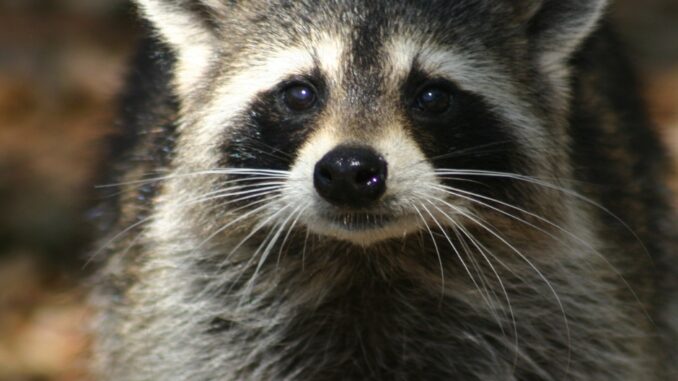
Have you ever wondered why raccoons have masks? These clever and curious creatures sport distinctive facial markings that resemble masks, giving them a mysterious and intriguing appearance.
Do you know? Raccoons are often playfully called “bandits” due to the black mask of fur surrounding their eyes. This distinctive feature has contributed to their notorious and endearing reputation.
The primary reason behind this unique feature lies in nature’s ingenious design. Raccoons have masks, characterized by black fur around their eyes, which serve as a means of reducing glare and aiding in enhanced vision, especially on sunny days.
Table of Contents
Why Do Raccoons Have Masks – Exploring Hypotheses
| Hypothesis | Description |
| Glare Reduction | The mask reduces sun glare, enhancing vision on sunny days. |
| Enhanced Vision | Facilitates detailed vision for foraging and exploration. |
| Adaptation to Bright Environments | Evolutionary response to thrive in well-lit conditions. |
| Nature’s Design for Functionality | Utilitarian purpose for enhanced visual advantage. |
| Evolving Hypotheses | Ongoing study may reveal new insights into its purpose. |
Glare Reduction – Nature’s Sunglasses?
One prevailing theory proposes that the black lines under a raccoon’s eyes act as a natural means of reducing glare, similar to the way athletes use black paint to diminish sun glare. This could enhance their vision on sunny days, aiding in navigation and foraging.
Enhanced Vision for Detail-Oriented Foraging
Another hypothesis suggests that these facial markings contribute to detailed vision. Whether foraging for food or exploring their environment, raccoons might leverage the enhanced vision facilitated by these markings to detect intricate details.
Adaptation to Bright Environments
Raccoons are known for their adaptability, and the hypothesis suggests that their facial markings are an evolutionary response to sunny conditions. The black lines could effectively absorb light, helping raccoons thrive in well-lit environments.
Nature’s Design for Functionality
While the primary purpose of raccoons’ facial masks is thought to be reducing glare and enhancing vision, some scientists also suggest that the distinctive black markings may contribute to a form of camouflage, helping them blend into their natural surroundings.
Evolving Hypotheses
As science evolves, so do our hypotheses. The raccoon’s mask remains a subject of ongoing study, and future research may uncover more about its purpose, offering new insights into the intriguing functionality behind these distinctive facial markings.
FAQs About Why Racoons Have Masks
Q1: Are raccoons born with masks?
A: Raccoon kits are born with the potential for masks, but the markings are initially light-colored and blend with the fur. As the kits mature, typically around 2-1/2 months old, the masks darken and become more discernible. The visibility of the masks can be an indicator of a raccoon kit’s age.
Q2: Why do raccoons have masks?
A: The purpose of raccoons’ facial masks isn’t definitively understood, but there are theories. One suggests that the markings aid in identification among raccoons. These variations may help them recognize one another, especially when forming temporary groups for protection or warmth. Another theory proposes that dark markings reduce glare from lights at night, enhancing their vision during nocturnal activities, similar to athletes using dark paint for improved vision.
Q3: What is the significance of raccoon masks in social groups?
A: While raccoons are mostly solitary, they may temporarily form groups, particularly for protection or warmth. The masks could play a role in identifying group members, especially among females who tend to form more stable social groups. The patterns may facilitate recognition and cohesion within these groups.
Q4: Do raccoons use their masks for camouflage?
A: There is a hypothesis that raccoons’ masks contribute to a form of camouflage, aiding them in blending into their natural surroundings. While the primary function is thought to be reducing glare, the distinctive markings may also provide a degree of camouflage, helping raccoons navigate their environments more effectively.
Q5: How does the visibility of masks help estimate the age of raccoon kits?
A: The visibility of masks in raccoon kits can serve as an age indicator. When the masks become sufficiently dark, usually around 2-1/2 months old, the kits are mature enough to leave the nest. Observing the visibility of masks can be a useful tool in estimating the age of raccoon kits encountered in the wild or in residential areas.
Conclusion
While the true purpose of raccoon masks remains uncertain, exploring these hypotheses unveils the complexity of nature’s designs. Whether it’s glare reduction, enhanced vision, or adaptation to bright environments, raccoons’ facial markings remain a captivating mystery, inviting further investigation into the wonders of the animal kingdom.
